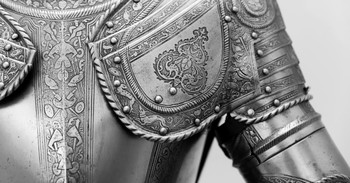To Timothy my true son in the faith: Grace, mercy and peace from God the Father and Christ Jesus our Lord. (1 Timothy 1:1)
Who is Timothy in the Bible?
Timothy is an important person in the Bible, known for his close relationship with the Apostle Paul. He appears in the New Testament, where he is featured in two letters Paul wrote to him, called First Timothy and Second Timothy.
Timothy was unique because he had a Greek father and a Jewish mother, which helped him connect with different types of people. Paul trusted Timothy and sent him to help Christian communities understand how to live and work together.
The letters to Timothy advise how to lead a church, care for its members, and what qualities good leaders should have. Timothy's story helps us learn how the early Christian church grew and how leaders were taught to look after their communities.
Timothy’s Birthplace and Family
This great asserter of the cause of Christ was a disciple of St. Paul and born at Lystra in Lycaonia. His father was a Gentile, but his mother was a Jew. Her name was Eunice, and that of his grandmother Lois. These particular are taken notice of, because St. Paul commends their piety and the excellent education which they had given Timothy.
Then he came to Derbe and Lystra. And behold, a certain disciple was there, named Timothy, the son of a certain Jewish woman who believed, but his father was Greek. (Acts 16:1)
Timothy Joined St. Paul on His Second Missionary Journey
When St. Paul came to Derbe and Lystra, about 51 or 52 A.D., the brethren gave such an advantageous testimony of the merit and good disposition of Timothy that the apostle Paul took Timothy with him to assist him in propagating the doctrine of his great Lord and Master, Jesus Christ.
Timothy applied himself to labor with St. Paul in the business of the gospel and helped him with very important services. Through the whole course of his preaching, St. Paul calls Timothy not only his dearly beloved son but also his brother, the companion of his labors, and a man of God.
This holy disciple accompanied St. Paul to Macedonia, Philippi, Thessalonica, and Berea. When the apostle went from Berea, he left Timothy and Silas there to confirm the converts. When St. Paul came to Athens, he sent for Timothy to come to him.
Then, when Timothy came and gave St. Paul an account of the churches of Macedonia, St. Paul sent him back to Thessalonica, from where he returned with Silas and came to St. Paul at Corinth. Timothy continued with him there for some time, and the apostle mentioned him with Silas at the beginning of the two Epistles, which he then wrote to the Thessalonians.
Timothy Continued to Travel with St. Paul on His Third Missionary Journey
Some years after this, St. Paul sent Timothy and Erastus into Macedonia and gave Timothy orders to call Corinth to refresh the minds of the Corinthians concerning the truths which he had taught them.
Sometime after, writing to the same Corinthians, he recommended they take care of Timothy and send him back in peace, after which Timothy returned to St. Paul in Asia. They went together to Macedonia, and the apostle put Timothy’s name with his own before the second Epistle to the Corinthians, which he wrote to them from Macedonia about the middle of the year of Christ 57. And he sends his recommendations to the Romans in the letter he wrote from Corinth the same year.
Timothy Became Bishop of Ephesus
When St. Paul returned from Rome in 64, he left Timothy at Ephesus to take care of that church, of which he was the first bishop, as the Council of Chalcedon recognizes him.
St. Paul wrote to him from Macedonia, the first of the two letters addressed to him. He recommends he be more moderate in his austerities and drink a little wine because of the weakness of his stomach and his frequent infirmities.
Timothy Received Paul’s Second Letter
After the apostle came to Rome in the year 65, being then very near his death, St. Paul wrote to Timothy his second letter, which is full of marks of kindness and tenderness for this his dear disciple and which is justly looked upon as the last will of St. Paul.
He desires him to come to Rome before winter and bring with him several things that he left at Troas. If Timothy went to Rome, and it is probable that he did, he must have been an eyewitness of the martyrdom of Paul, which happened in the year of Christ 68.
Timothy Returned to Ephesus and Was Murdered
After Timothy had visited Paul at Rome, he returned to Ephesus, where he continued to govern the church as its bishop, without the least interruption for a considerable time, till at length, he fell victim to the malice of the pagans, who were his most inveterate enemies. The pagan people held a great feast, in the celebration of which they carried in procession the images of their idols, being all masked and armed with clubs and other offensive weapons.
Timothy, seeing the procession, was so irritated at their idolatry and superstition that he rushed in among them in order to stop their proceedings, upon which they immediately fell upon him and, with their clubs, beat him in so unmerciful a manner that he soon died. They left the body on the spot where they had murdered him, which was removed thence by some of his disciples and decently interred on the top of a mountain at a small distance from the city.
The Greeks commemorate his martyrdom on the 22nd of January, the day on which it is supposed he gave up his life in defense of the doctrine he had long labored to propagate, and during which time he had brought over significant numbers of people to embrace the truth of the Christian religion.
Resources: This story is adapted from John Kitto's 1870 History of the Bible and represents the commonly accepted views about this apostle among rank-and-file believers in the late 19th century.
Photo Credit: ©GettyImages/artisteer
This article is part of our People of Christianity catalog that features the stories, meaning, and significance of well-known people from the Bible and history. Here are some of the most popular articles for knowing important figures in Christianity:
How Did the Apostle Paul Die?
Who are the Nicolaitans in Revelation?
Who Was Deborah in the Bible?
Who Was Moses in the Bible?
King Solomon's Story in the Bible
Who Was Lot's Wife in the Bible?
Who Was Jezebel in the Bible?
Who Was the Prodigal Son?



